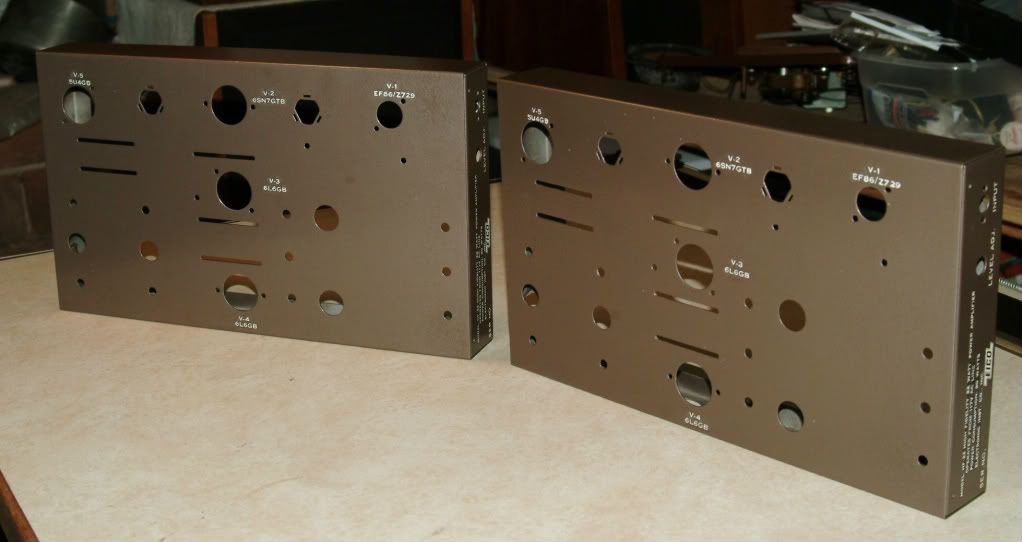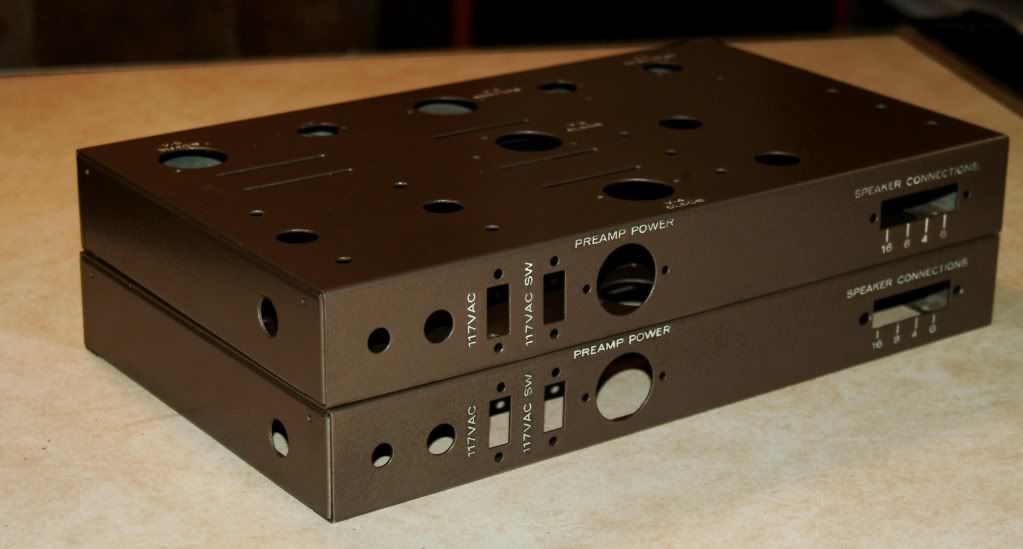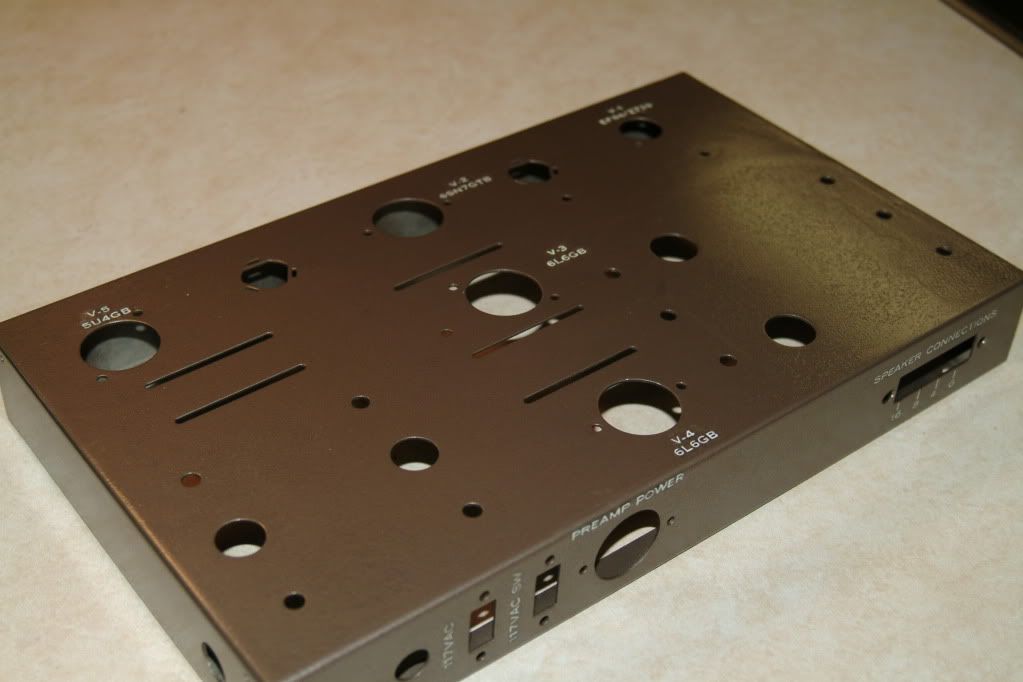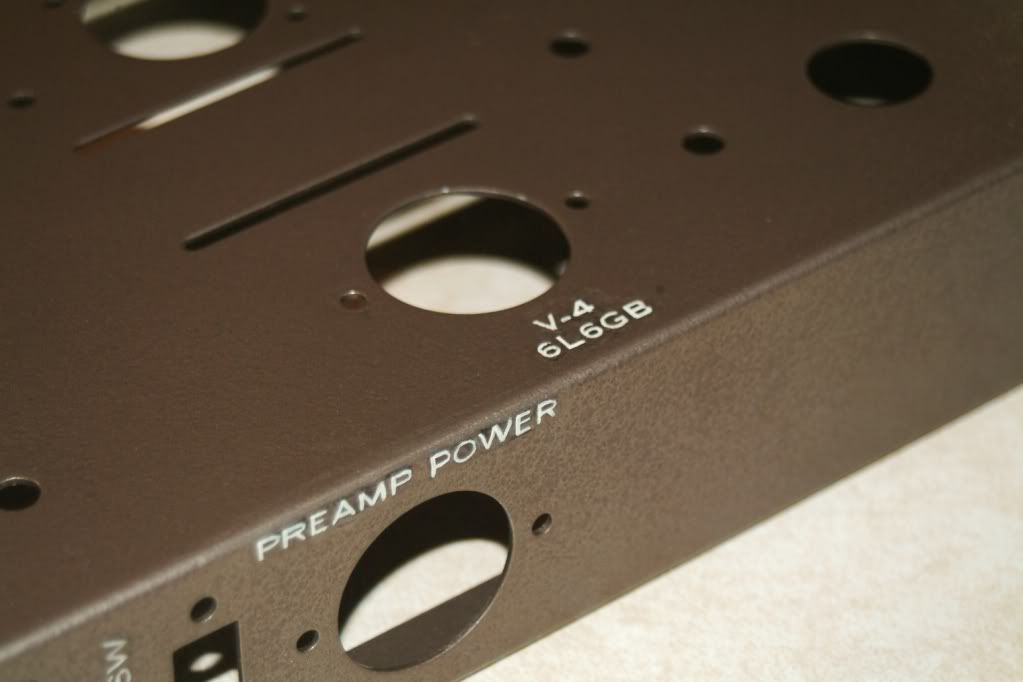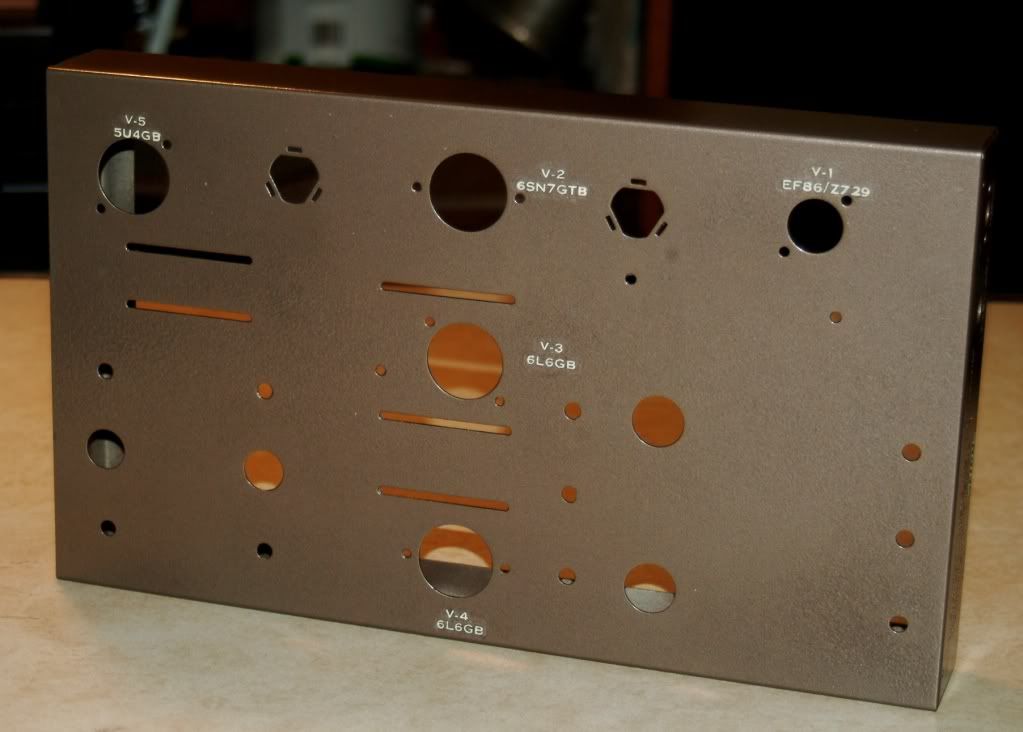Only problem with converting them to HF-35 is that you'd have to get different power transformers. And there are folks who say that even with less power, the HF-22 amps sound nicer than the HF-35.
I'm one of those.
IMHO, the Eico 32004 output transformer is a GREAT 6L6 transformer, but only a so-so EL34 transformer. Asking the additional power output from it definitely seems to degrade its bass performance (it will do full 20-20K Hz bandwidth at extremely low distortion at 22w, but starts to saturate a bit at 20Hz at 35w- in fact, at anything above about 27w).
The one experiment I'd maybe want to try with EL34s in a HF22 chassis, would be to run the 32004s as non-ultralinear (just disconnect the UL taps and ignore them), and run a pair of EL34s in fixed-bias pentode mode. Use the 16 ohm tap for 8 ohm speakers, and the 8 ohm tap for 4 ohm speakers, to create about a 3800 ohm primary load (instead of 7600 ohms). The combination of needing less idle current this way, and the evidence provided that sometimes running transformers at half their rated impedance (as Steve L. and David G. posted about recently) can lead to surprising performance at high output levels... this might work.
Regards,
Gordon.
Last edited:






